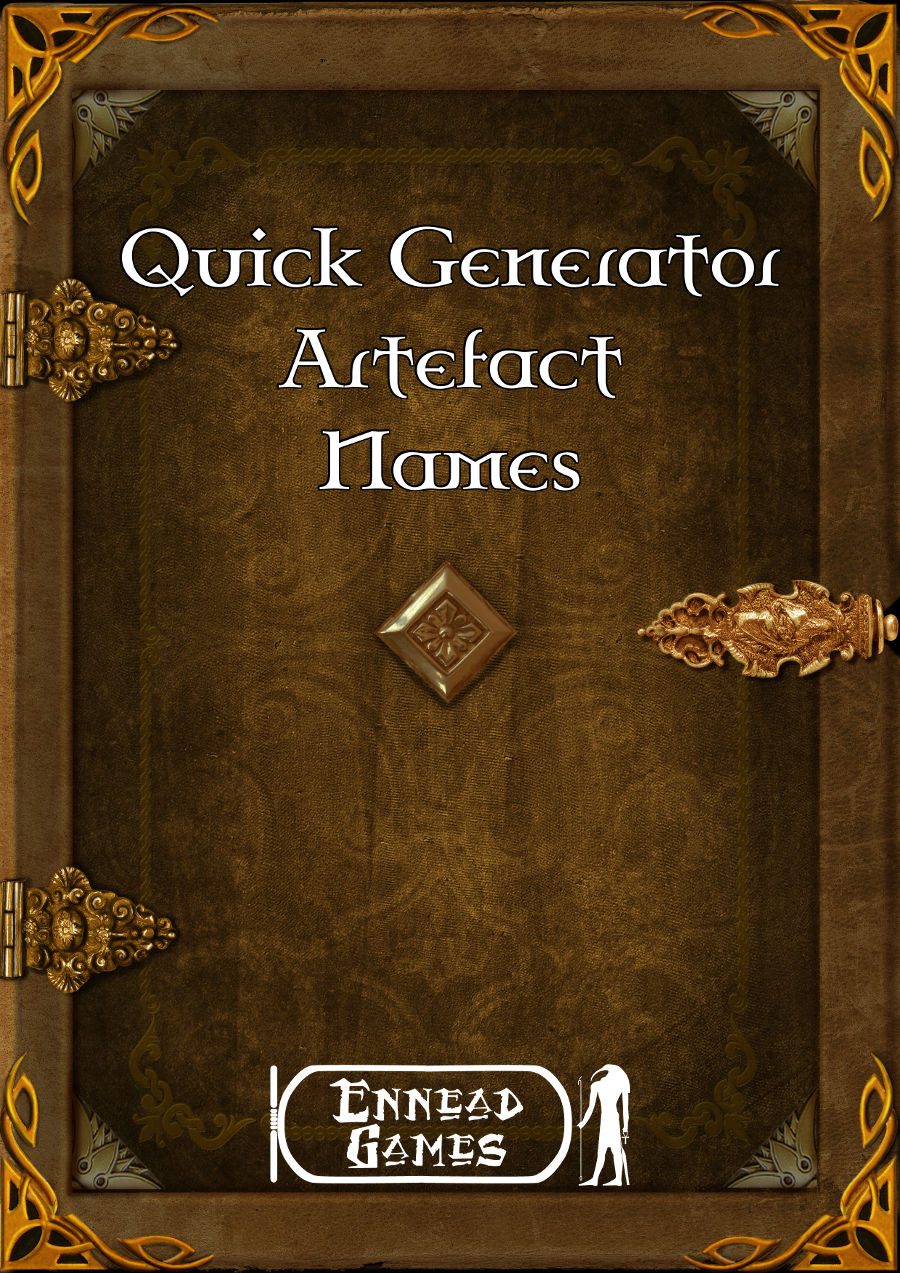
We all need Intrusions
Phil Nicholls blogs at Tales of a GM, where he writes about narrative gaming, faster prep and more story. He is currently running a HeroQuest Glorantha campaign in a home-brew setting. Phil has written for Johnn Four’s Roleplaying Tips newsletter and produced a selection of self-published pdfs.
This essay is taken from the archives at Tales of a GM.
Under my current house rules for HeroQuest, I use Skuld cards as the GM equivalent of Bennies. I find it empowering to intervene in the plot while following restrictions similar to those experienced by the Players. This is very similar to the GM Intrusion rule as outlined in Monte Cook’s Numenera, but the concept applies to any narrative game. Monte devotes several pages to explaining Intrusions in the Numenera Core Rules.
The Principles of Intrusion
An Intrusion is where the GM intervenes in the narrative to heighten the drama or conflict, typically by worsening the current situation. Thus, the Warrior drops her sword, the Rogue triggers a trap or the Mage opens a Planar Portal. To compensate for this, the (most) affected Player receives a Bennie, or system equivalent reward. The affected Player also gains a second reward to hand out to another Player of their choice. In Numenera, a Player may decide to deny the Intrusion, but thereby does not receive the rewards.
While I like the idea of Players weighing up the choice of accepting an Intrusion or not, this does not always fit with my plans for the plot, such as the Escaping Villain trope below. Therefore, I suggest dividing Intrusions into two categories:
- Dramatic Intrusions – These are the standard Numenera Intrusions which a Player can refuse. Examples would be Ascanius dropping his cleaver in the middle of combat, or Ragnarr’s lightning spell rebounding onto the other Heroes.
- Plot Intrusions – These Intrusions are the ones the GM forces through. This is not to ride roughshod over the Players, but rather to ensure that an important plot twist happens. Such enforced Intrusions require careful handling and a degree of trust from the Players.
What Intrusions can do for Your Game
Intrusions are a perfect fit for any narrative game. The benefits are as follows:
- Intrusions give the GM a controlled way to guide the plot. – Obvious, but this is the core of what Intrusions do. We all need ways to guide the plot, not to railroad the Players, but to weave more drama and excitement into the game. When aiming for a cinematic feel, you need to add plot twists and complications to the story. Intrusions allow you to do exactly that.
- Player buy-in. – Of course, GMs have been manipulating events for as long as there have been GMs. Yet, by codifying the process as an Intrusion, making these twists part of the rules, then the process is legitimised. Plus, when Players receive a reward as a direct result of the Intrusion, they are more accepting of the process. While some Players accept these minor reversals as part of the drama of the game, others may need to be
- Plot Intrusions facilitate certain types of event. – Finally, Intrusions simply allow the GM to achieve a broader selection of events in the game. No longer will you need to fudge circumstances or rolls, instead simply declare an event to be a Plot Intrusion, and thus side-step Player intervention at a crucial moment. For example:
- The Villain escapes! – I have tried several times to ensure that this happens early in the story, but the Players always overwhelm the villain. I want to follow the traditional plot of an early encounter with the villain, who gloats and leaves, only to be defeated later. Intrusions are a perfect way to facilitate this trope.
- More Guards burst through the door! – How many times have you run a combat, only for the Players to breeze through it without raising a sweat? An Intrusion legitimises the arrival of reinforcements, prolonging an exciting combat and creating the desired level of tension.
- Capture the Heroes – Having the villain capture the Heroes, only to reveal his plans and foolishly allow the Heroes to later escape is a common trope, especially in the earlier James Bond films. Such an event is notoriously hard to pull off in RPGs, but simple with a Plot Intrusion.
- Make the Cool Power work – Another frustrating situation is where you have a villain or monster with a cool power, only to fail to make it work however many times you try to use it. Once again, an Intrusion will legitimise the GM forcing this to succeed. This should be used rarely, and is best restricted to iconic abilities, but remains a useful option.
Limitations
Obviously, you must not abuse the system. The Players need to trust the GM, so use Intrusions sparingly. Even though the method is justified to the Players in advance, and they can be rewarded in the process, care is still needed. Perhaps one Intrusion per hour of gameplay is a fair use of the ability.
Likewise, if the Players see that you are using Intrusions to Maximise Game Fun, then their tolerance for them will increase. So, the trope of the villain who escapes, only to be beaten later, serves as a good example. To balance out the Players’ frustration at having the villain escape, be sure to give them the satisfaction of subsequently defeating the villain. This defeat may come later in the same scenario, or even in the campaign, just make sure you give the Players this payoff.
Conclusion
Intrusions are a welcome tool for a narrative game. Use them wisely and Maximise the Gaming Fun. To read more about Intrusions, see the Numenera Core Rules.
What do you think about Intrusions? Have you used something similar in your game? Share your thoughts in the comments below.
Happy Gaming
Phil
For more essays from Phil, and updates about his latest campaign, visit Tales of a GM.




One thought on “[Tales of a GM] – We all need Intrusions”
Comments are closed.